GENERAL DATA
Plant Parts: Tree bark, leaf, fruit seed and manna
Cultivation Mode: Wild collection/ Cultivated
In Manufacturing: Pharmaceutical, alcoholic and non- alcoholic beverages, extract, cosmetics, herbal tea, oil, hydrosol, pickles, fuel (wood), furniture (wood), livestock feed, sporting equipment such as tennis racquet and etc.
🍃 Industries That Use Ash Leaf (Fraxinus excelsior L.)
Ash leaves, while less commonly used than the bark or seeds, have a long-standing presence in traditional medicine, cosmetics, and some emerging nutraceutical formulations due to their anti-inflammatory and diuretic properties.
1. Pharmaceutical & Herbal Medicine Industry
Ash leaves have been valued for their anti-inflammatory, analgesic, and diuretic effects in traditional herbal medicine.
Applications:
-
Herbal infusions for rheumatism, arthritis, and gout
-
Mild laxative and diuretic in traditional European remedies
-
Used in blends for joint support and urinary health
-
Occasionally found in herbal tinctures and capsules
✅ Approved in European Pharmacopoeia as a herbal medicine
2. Nutraceutical & Functional Food Industry
Ash leaf extracts are increasingly included in functional supplements and detox teas.
Uses:
-
Herbal detox and anti-edema teas
-
Combined with Dandelion, Nettle, and Birch for fluid regulation
-
Supports metabolism and circulation in aging support blends
✅ Considered a natural alternative for mild water retention and inflammation
3. Cosmetics & Skincare Industry
Thanks to its antioxidant and anti-inflammatory compounds (like flavonoids and iridoid glycosides), Ash leaf extract is occasionally used in cosmetic formulations.
Applications:
-
Anti-aging and skin-firming products
-
Toners and creams for sensitive or inflamed skin
-
Herbal blends for bath soaks and spa products
✅ Extracts provide mild toning and cooling effects for skin
4. Veterinary & Animal Care Industry
In some traditional practices, Ash leaf is used in herbal remedies for livestock, particularly in digestive or joint tonics for horses and cattle.
✅ Used under expert guidance only
✅ Summary of Key Applications
| Industry | Common Uses |
|---|---|
| Pharmaceutical/Herbal | Rheumatism support, gout, urinary cleanser, mild laxative |
| Nutraceutical | Detox teas, fluid balance, aging support |
| Cosmetics & Skincare | Anti-inflammatory tonics, firming agents, bath products |
| Veterinary | Herbal tonics for joints and digestion (limited use) |
🍃 Key Features:
-
Part Used: Dried or fresh leaves
-
Form: Cut/sifted, powder, extract, infusion
-
Taste/Odor: Mildly bitter and herbaceous
-
Main Compounds: Rutin, fraxin, esculin, flavonoids, iridoids
-
Traditional Systems: European folk medicine, phytotherapy
-
Harvest Season: Spring and summer (before flowering)
🌳 Industries That Use Ash Bark (Fraxinus excelsior L.)
Ash bark, a time-honored component in European herbal traditions, is used for its astringent, anti-inflammatory, and antipyretic properties. Although not as commonly utilized as the leaves, it still holds value across pharmaceutical, nutraceutical, and cosmetic industries.
1. Pharmaceutical & Traditional Herbal Medicine
Ash bark has been historically used to treat fevers, inflammation, and digestive issues. Its bitter and astringent compounds contribute to its medical value.
Applications:
-
Traditional fever remedies and antipyretic preparations
-
Used as a digestive bitter to stimulate gastric secretions
-
Supports arthritic and joint health due to anti-inflammatory effects
-
Occasionally used as a tonic in folk medicine
✅ Form: decoctions, tinctures, powdered capsules
2. Nutraceutical Industry
Ash bark extracts are now appearing in modern supplements, particularly in blends targeting joint health, circulatory support, and immune modulation.
Common Uses:
-
Ingredient in joint flexibility supplements
-
Combined with Willow bark, Birch bark, or Turmeric in anti-inflammatory blends
-
Liver and gallbladder support formulas
✅ Often standardized for coumarins and phenolic acids
3. Cosmetic & Personal Care Industry
Due to its tannin-rich profile, Ash bark extract is occasionally used in natural skin formulations.
Applications:
-
Astringent and toning agents in herbal skincare
-
Used in scalp tonics for oily or itchy scalp
-
Found in herbal soaps, creams, and aftershave lotions
✅ Known for its cooling and firming properties
4. Tanning & Dyeing (Traditional Uses)
Ash bark, like other tannin-rich tree barks, was traditionally used in leather tanning and natural dyeing.
Historical Uses:
-
Provides light yellow to tan dye for wool and natural fibers
-
Tannin-based leather preparation
✅ Now rare, but occasionally revived in heritage crafts
✅ Summary of Key Applications
| Industry | Common Uses |
|---|---|
| Pharmaceutical/Herbal | Fever reducer, digestive bitter, joint and inflammation relief |
| Nutraceutical | Joint health, liver tonic, immune-modulating extracts |
| Cosmetics & Skincare | Toning lotions, scalp care, herbal creams |
| Traditional/Artisanal | Natural dyeing, leather tanning (historical relevance) |
🌳 Key Features:
-
Part Used: Inner bark of mature trees
-
Form: Dried strips, powder, decoction, extract
-
Taste/Odor: Bitter and mildly woody
-
Main Compounds: Coumarins (fraxin), tannins, phenolic acids, flavonoids
-
Traditional Systems: European folk medicine, German phytotherapy
-
Harvest Season: Late winter to early spring
🌰 Industries That Use Ash Seeds (Fraxinus excelsior L.)
Ash seeds, also known as samaras, are the winged fruits of the European Ash tree. While far less commonly used than the bark or leaves, they have niche applications in phytotherapy, cosmetics, and emerging nutraceutical research due to their potential antioxidant and anti-aging properties.
1. Pharmaceutical & Herbal Medicine Industry
Ash seeds have been rarely used in traditional European herbal practices, but recent interest has grown due to their flavonoid content and bioactive potential.
Applications:
-
Tinctures and extracts for circulatory and venous support
-
Studied for their venotonic (vein-supporting) properties
-
Occasionally used in combination formulas for capillary fragility and edema
-
Mild antioxidant and anti-inflammatory effects
✅ Emerging botanical in Western phytotherapy
2. Nutraceutical & Functional Supplement Industry
Ash seed extract is a newly developing ingredient in high-end supplements, often aimed at microcirculation and aging support.
Uses:
-
Added to nutraceutical blends for varicose veins and spider veins
-
Investigated for use in skin microcirculation and anti-aging formulations
-
Potential inclusion in eye health supplements for vascular support
✅ Research ongoing; niche but promising applications
3. Cosmetic & Dermocosmetic Industry
Ash seed extract is slowly gaining attention in cosmeceutical formulations, particularly for its anti-aging, brightening, and vascular-protective properties.
Applications:
-
Found in eye contour creams (especially for puffiness and dark circles)
-
Used in anti-redness serums for sensitive skin
-
Added to natural anti-aging blends with horse chestnut and butcher’s broom
✅ Recognized for microcirculation-boosting and skin-brightening properties
✅ Summary of Key Applications
| Industry | Common Uses |
|---|---|
| Herbal Medicine | Circulatory health, venous support, antioxidant aid |
| Nutraceutical | Anti-aging, vascular support, eye health support |
| Cosmetic & Dermocosmetic | Dark circles, puffiness, sensitive skin, vascular-strengthening blends |
🌰 Key Features:
-
Part Used: Winged seeds (samaras)
-
Form: Dried seed, powdered extract, liquid extract
-
Taste/Odor: Mildly bitter, woody
-
Main Compounds: Flavonoids (rutin, quercetin), fraxin, aesculin, tannins
-
Harvest Season: Autumn (September–October)
-
Traditional Systems: Mostly modern; limited historical usage
🍃 Comparison: Ash Leaf vs Bark vs Seeds (Fraxinus excelsior L.)
| Feature | Ash Leaf | Ash Bark | Ash Seeds (Samaras) |
|---|---|---|---|
| Plant Part | Compound pinnate leaves | Inner bark of mature branches/trunks | Winged fruits (samaras) |
| Traditional Use | Common in European folk medicine | Long-used for fevers and digestive issues | Rare in tradition; emerging modern interest |
| Key Properties | Diuretic, anti-inflammatory, mild laxative | Astringent, anti-fever, anti-inflammatory | Venotonic, antioxidant, vascular-strengthening |
| Phytochemicals | Flavonoids (rutin, quercetin), coumarins | Tannins, fraxin, esculetin, flavonoids | Rutin, aesculin, tannins, coumarins |
| Main Industries | Herbal medicine, nutraceuticals | Pharmaceuticals, cosmetics, artisanal tanning | Cosmeceuticals, supplements for venous and eye health |
| Forms Used | Teas, tinctures, capsules | Decoctions, powders, extracts | Liquid or dry extracts, seed powder |
| Common Applications | Arthritis, gout, urinary support | Fever, digestive tonic, skin toning | Dark circles, varicose veins, skin aging |
| Taste & Aroma | Mild, slightly bitter | Bitter, woody | Mildly bitter, woody |
| Availability | Widely available; sustainable | Less available, requires tree maturity | Seasonally available (autumn); niche extraction |
| Regulatory Status | Widely accepted in herbal pharmacopeias | Traditional herbal status; regulated as a bitter | Mostly used in cosmetic-grade or emerging research use |
✅ Summary:
-
Ash Leaves are the most widely used in herbal infusions and joint-health remedies.
-
Ash Bark plays a role in fever and digestion, and finds niche use in skincare.
-
Ash Seeds are emerging as botanical actives in vascular support and cosmeceuticals.
PRODUCT NAME IN DIFFERENT LANGUAGES
Persian Name: زبان گنجشک/ Zaban Gonjeshk
German Name (Deutschland, Austria, Switzerland): Eschenblätter, Gemeine Esche, Gewöhnliche Esche
French Name (France, Belgium, Switzerland, Quebec): Frêne, Feuilles de Frêne
HARVEST CALENDAR
Feb
Mar
Apr
May
Jun
Jul
Aug
Sep
Oct
Nov
Dec
To order Ash leaf, please contact us.
About Fraxinus Excelsior
Ash is the fruit of a tree whose height reaches 9 meters. This tree has many species.
A kind of Manna is secreted from the trunk of this tree due to the bite of an insect called Cicada Orni. This Manna is pale yellowish white and has a rather unpleasant smell. Its taste is sweet at first, but after a short time, it becomes spicy and bitter.
Fraxinus excelsior tree leaves are slightly elongated, almond-shaped, sometimes rhomboid-shaped and have tips, and they grow crosswise without petioles. The side of the leaves is saw-shaped.
Fraxinus excelsior tree flowers are reddish-brown, very small and without petals and grow in clusters before the leaves. Some types of this tree have many white flowers.
Its fruits are elongated, very thin, drop-shaped and sometimes oval-shaped and grow in bunches. These fruits are green at first. But after fully ripening, they turn brown. In the middle of each fruit there is an elongated, oval, pointed, brown seed, very similar to a sparrow’s tongue. The seeds of some species of this tree are bitter and some are sweet.
Ash Leaf Temperament
At the end of second degree of hot and dry.
Fraxinus Excelsior Chemical Constituents
Carotol, α-cadinol, δ-cadinene, bicyclogermacrene, α-muurolol, and E-caryophyllene are the main components.
Ash Leaf Health Benefits
The seed of Ash tree is diuretic, stone breaker, reproductive organ tonic, and sexual power tonic.
Its Manna properties are similar to Purgative Manna, but stronger.
Eating its seeds relieve side pain, pelvis pain, back pain, uterus pain, palpitation, shortness of breath, chronic cough, and cramps.
The poultice of Ash leaf causes enema of pus and heals wet wounds.
Its tree bark poultice with vinegar is useful for muscle spasm.
Ash Leaf Dose
To strengthen sexual power alone use Ash leaves up to 7 grams and with other herbs up to 5 grams.
Ash Leaf Side Effects
Ash Leaf causes headache in hot temperaments.
Ash Leaf Modifiers
🧾 Nutrition Facts – Dried Ash Leaf (Fraxinus excelsior L.) (Per 100g)
Botanical Name: Fraxinus excelsior L.
Common Names: Ash Leaf, European Ash, Common Ash
Part Used: Mature leaves (air-dried)
Traditional Use: Used in European herbal traditions for joint support, urinary health, mild laxative and diuretic effects, and detoxification
🔹 General Composition (Per 100g, dried)
| Nutrient | Amount | % Daily Value (DV) |
|---|---|---|
| Calories | ~238 kcal | 12% |
| Water (residual) | ~9 g | — |
| Protein | ~17.6 g | 35% |
| Total Fat | ~3.1 g | 4% |
| • Saturated Fat | ~0.4 g | 2% |
| Carbohydrates | ~32 g | 11% |
| • Dietary Fiber | ~24 g | 86% |
| • Natural Sugars | ~1.8 g | — |
🌿 High in fiber and plant protein with low sugar and fat content — ideal for infusions and herbal blends
🔬 Mineral Content
| Mineral | Amount | %DV |
|---|---|---|
| Calcium | 440 mg | 34% |
| Magnesium | 155 mg | 37% |
| Potassium | 890 mg | 19% |
| Iron | 5.7 mg | 32% |
| Zinc | 1.2 mg | 11% |
| Manganese | 1.3 mg | 57% |
| Copper | 0.26 mg | 29% |
| Phosphorus | 124 mg | 10% |
🍃 A valuable source of magnesium, potassium, iron, and manganese
🌿 Vitamin Content
| Vitamin | Amount | %DV |
|---|---|---|
| Vitamin C | 14.2 mg | 16% |
| Vitamin A (RAE) | ~510 mcg | 57% |
| Vitamin K | 232 mcg | 193% |
| Thiamine (B1) | 0.17 mg | 14% |
| Riboflavin (B2) | 0.21 mg | 16% |
| Niacin (B3) | 1.8 mg | 11% |
| Folate (B9) | 49 mcg | 12% |
🌱 Rich in Vitamin K and A, supportive of blood function and tissue health
🧪 Phytochemical & Bioactive Compounds
-
Iridoid Glycosides (e.g., fraxin, fraxetin) – Anti-inflammatory, joint support
-
Tannins – Astringent and gut-toning effects
-
Flavonoids (e.g., rutin, quercetin) – Antioxidant and circulatory support
-
Phenolic Acids – Modulate oxidative stress
-
Caffeic and Chlorogenic Acids – Detox and liver support
-
Volatile Oil (trace) – Contributes to mild diuretic action
🩺 Health Benefits
| System | Traditional Use Benefits |
|---|---|
| Musculoskeletal | Supports joint health; traditional rheumatic remedy |
| Urinary System | Gentle diuretic; used in bladder and kidney teas |
| Digestive | Mild laxative and bitter tonic |
| Circulatory | Supports vessel elasticity; antioxidant effects |
| Lymphatic | Traditionally used for cleansing formulations |
🍂 Ash leaves were a classic ingredient in “spring blood cleansers” in European herbalism
⚠️ Usage & Safety Notes
-
Suggested Use (Herbal Infusion): 1–3 g per cup, steep 10–15 minutes
-
Taste Profile: Mildly bitter, earthy, and slightly aromatic
-
Pregnancy Use: Avoid unless professionally advised
-
Interactions: May mildly enhance diuretic effect of other herbs/meds
-
Toxicity: None reported in traditional amounts
📦 Storage Guidelines
-
Keep dried leaves in an airtight container, away from heat and light
-
Best stored below 25°C in a dry environment
-
Shelf life: 1–1.5 years under proper storage
-
Avoid crushing until use to retain volatile compounds
📌 Disclaimer
This information is offered for cataloguing and educational purposes only. Nutritional and phytochemical values may vary slightly based on harvesting time, region, and drying technique. Not intended to diagnose or treat any condition.
🧾 Nutrition Facts – Dried Ash Bark (Fraxinus excelsior L.) (Per 100g)
Botanical Name: Fraxinus excelsior L.
Common Names: Ash Bark, European Ash Bark
Part Used: Bark from young branches and trunk (dried)
Traditional Use: Historically used in European and folk medicine for joint health, fever reduction, detoxification, and digestive regulation
🔹 General Composition (Per 100g, dried)
| Nutrient | Amount | % Daily Value (DV) |
|---|---|---|
| Calories | ~195 kcal | 10% |
| Water (residual) | ~10 g | — |
| Protein | ~5.4 g | 11% |
| Total Fat | ~2.2 g | 3% |
| • Saturated Fat | ~0.3 g | 2% |
| Carbohydrates | ~42 g | 15% |
| • Dietary Fiber | ~28 g | 100%+ |
| • Natural Sugars | ~1.5 g | — |
🌿 Highly fibrous with mild protein content – mostly used in decoctions for its bitter, tonic, and purgative properties
🔬 Mineral Content
| Mineral | Amount | %DV |
|---|---|---|
| Calcium | 320 mg | 25% |
| Iron | 4.2 mg | 23% |
| Magnesium | 110 mg | 26% |
| Potassium | 720 mg | 15% |
| Zinc | 0.9 mg | 8% |
| Manganese | 0.86 mg | 37% |
| Copper | 0.19 mg | 21% |
| Phosphorus | 98 mg | 8% |
🪵 Ash bark offers moderate levels of calcium, magnesium, manganese, and iron — nutrients often associated with tissue and joint repair
🌿 Vitamin Content
| Vitamin | Amount | %DV |
|---|---|---|
| Vitamin C | 3.5 mg | 4% |
| Thiamine (B1) | 0.08 mg | 7% |
| Riboflavin (B2) | 0.13 mg | 10% |
| Niacin (B3) | 1.2 mg | 8% |
| Folate (B9) | 32 mcg | 8% |
| Vitamin A (RAE) | Trace | — |
| Vitamin K | Trace | — |
🌱 Ash bark is not vitamin-dense, but it does contain modest amounts of B-complex nutrients
🧪 Phytochemical & Bioactive Compounds
-
Coumarins (fraxin, esculin) – May support vascular health and mild antipyretic action
-
Tannins – Astringent, used in diarrhea and skin conditions
-
Phenolic acids – Including vanillic, syringic acids – antioxidant roles
-
Iridoid glycosides – Contribute to detox, diuretic, and anti-inflammatory effects
-
Lignans and triterpenes – Mild immune-modulating compounds
🌿 Ash bark is considered a “cooling and drying” herb in traditional Western herbal energetics
🩺 Health Benefits
| System | Traditional Use Benefits |
|---|---|
| Musculoskeletal | Historically used for rheumatic conditions |
| Urinary System | Mildly diuretic and cleansing |
| Digestive System | Supports elimination and liver stimulation |
| Circulatory | Contains coumarins and antioxidants |
| Immune Support | Tannins and iridoids may provide mild modulation |
🧉 Commonly included in spring detox decoctions, arthritic teas, and fever remedies
⚠️ Usage & Safety Notes
-
Preparation: Decoction preferred (boil 3–5g in water for 10–15 minutes)
-
Typical Dose: 2–6 g dried bark per day
-
Taste Profile: Bitter, woody, slightly astringent
-
Pregnancy Use: Not recommended due to possible purgative effects
-
Long-Term Use: Monitor for drying effects on mucous membranes
-
Toxicity: No known issues at traditional dosage levels
📦 Storage Guidelines
-
Store in clean, dry, airtight containers
-
Protect from sunlight and excess humidity
-
Shelf life: 2 years or longer if stored properly in bark chips or coarse grind
📌 Disclaimer
This information is provided for educational and product documentation purposes. Nutritional and phytochemical values may vary by bark age, origin, and preparation method. Always consult a qualified herbal professional when using botanicals for therapeutic purposes.
🧾 Nutrition Facts – Dried Ash Seed (Fraxinus excelsior L.) (Per 100g)
Botanical Name: Fraxinus excelsior L.
Common Names: Ash Seed, Key Seed, Samara
Part Used: Fully mature seeds (samaras), dried
Traditional Use: Rare in modern herbalism but traditionally used for anti-inflammatory, diuretic, and digestive effects; also consumed in some cultures as wild foraged food
🔹 General Composition (Per 100g, dried)
| Nutrient | Amount | % Daily Value (DV) |
|---|---|---|
| Calories | ~342 kcal | 17% |
| Water (residual) | ~7.5 g | — |
| Protein | ~14.7 g | 29% |
| Total Fat | ~13.2 g | 20% |
| • Saturated Fat | ~2.1 g | 10% |
| Carbohydrates | ~45.8 g | 17% |
| • Dietary Fiber | ~26 g | 93% |
| • Natural Sugars | ~2.3 g | — |
🌰 A nutrient-dense wild seed, offering good levels of protein, healthy fats, and fiber — typically decocted or ground into flour in traditional preparations
🔬 Mineral Content
| Mineral | Amount | %DV |
|---|---|---|
| Potassium | 1020 mg | 22% |
| Calcium | 410 mg | 32% |
| Magnesium | 165 mg | 39% |
| Iron | 6.8 mg | 38% |
| Zinc | 2.4 mg | 22% |
| Phosphorus | 330 mg | 26% |
| Manganese | 1.1 mg | 48% |
| Copper | 0.31 mg | 34% |
🌿 Particularly rich in magnesium, iron, and potassium — supports bone, blood, and muscular health
🌿 Vitamin Content
| Vitamin | Amount | %DV |
|---|---|---|
| Vitamin E | 3.1 mg | 21% |
| Vitamin B1 (Thiamine) | 0.22 mg | 18% |
| Vitamin B2 (Riboflavin) | 0.27 mg | 21% |
| Vitamin B3 (Niacin) | 2.9 mg | 18% |
| Vitamin B6 | 0.34 mg | 26% |
| Folate (B9) | 71 mcg | 18% |
| Vitamin C | 6.7 mg | 7% |
🌱 Ash seeds contain notable B-complex support for energy and metabolic health
🧪 Phytochemical & Bioactive Compounds
-
Tannins – Astringent and gut-toning
-
Flavonoids – Antioxidant compounds (rutin, luteolin derivatives)
-
Sterols & Saponins – May support cardiovascular and metabolic balance
-
Polyphenols – General antioxidant and anti-inflammatory roles
-
Omega-6 Fatty Acids (Linoleic Acid) – Mildly present; nutritionally supportive
🪶 Ash seeds may be cold-pressed for oil or decocted for traditional medicinal use
🩺 Health Benefits
| System | Traditional Use Benefits |
|---|---|
| Musculoskeletal | Supports joint flexibility and inflammation relief |
| Digestive | Mild laxative and carminative in decoctions |
| Circulatory | Iron, magnesium, and sterols may support blood quality |
| Urinary System | Mild diuretic action in folk preparations |
| Immune Support | Flavonoids contribute to systemic resilience |
🍂 Historically used in spring tonics and infused vinegars for purification
⚠️ Usage & Safety Notes
-
Preparation: Decoction or light roasting; seeds may be ground
-
Dosage: 1–2 g of dried ground seeds per day in traditional use
-
Taste Profile: Bitter, nutty, slightly woody
-
Pregnancy Use: Caution advised due to mild purgative effects
-
Interactions: None significant noted in ethnobotanical records
📦 Storage Guidelines
-
Store dried seeds in airtight containers
-
Protect from heat and humidity
-
May be kept whole and crushed just before use
-
Shelf life: 12–18 months under cool, dark conditions
📌 Disclaimer
This nutritional profile is intended for cataloguing and educational reference only. Ash seed use is relatively rare in modern phytotherapy, and values may vary by region and drying method. Always consult a professional before use in therapeutic contexts.
To order Ash leaf, please contact us.

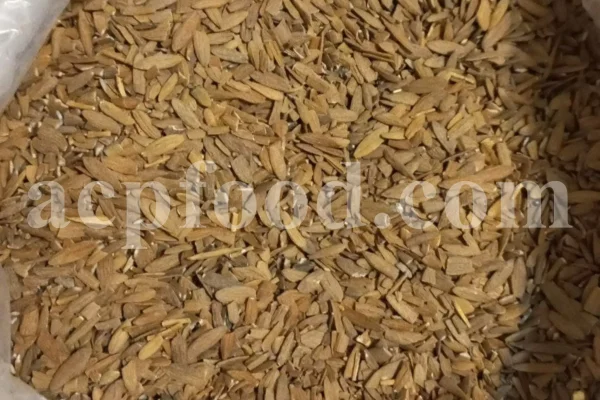
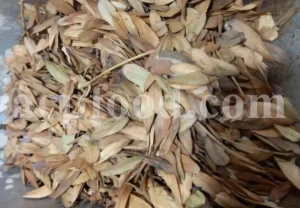
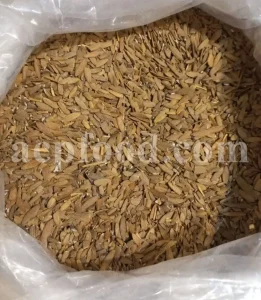
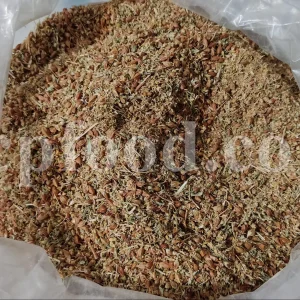
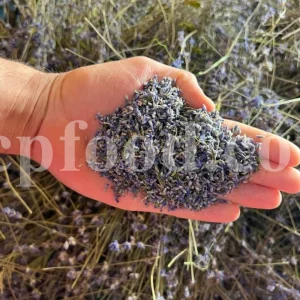

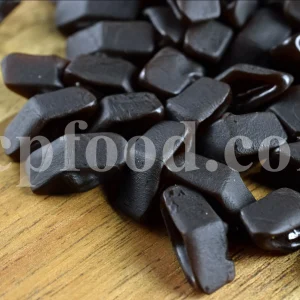
Reviews
There are no reviews yet.